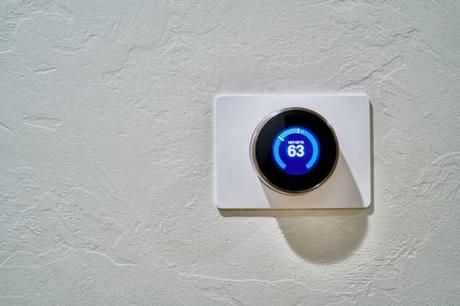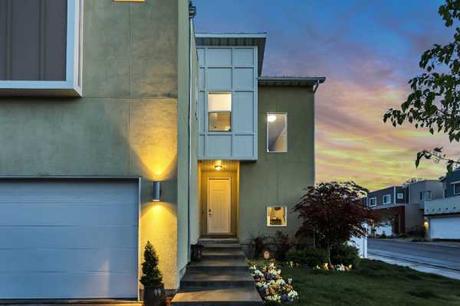
Turning your house into a smart home might sound complex, but it's easier than you think. This guide breaks down the essentials, showing you how a few smart upgrades can make a big difference in your daily life. Just a tap on your phone or a quick voice command, and your home adjusts to your lifestyle, effortlessly combining luxury with practicality right at your doorstep.
What is a Smart Home?

A smart home is an advanced setup where appliances, lighting, heating, cooling systems, and even security devices communicate with each other. They're all connected through the internet, allowing you to control them remotely via smartphones or other networked devices.
Imagine walking into a room and the lights turning on automatically or your heating adjusting itself based on the outside temperature. These are examples of home automation, where devices perform tasks automatically based on preset rules or schedules.
With remote access, you can control your home devices from any location. Whether you're in bed and want to turn off the lights downstairs or you're at work and need to check your home security cameras, remote access makes it possible.
Benefits of Smart Homes
Convenience and Comfort

Smart homes bring unmatched convenience and comfort to your daily life. Imagine your home automatically adjusting lighting, temperature, and security settings, all without you lifting a finger. This kind of automation saves time and keeps your living environment just the way you like it.
Voice control and remote access take this convenience to the next level. Whether you're using a simple voice command or a smartphone app, you can manage your home's settings from anywhere.
Energy Efficiency and Cost Savings
One of the most significant advantages of smart homes is the potential for energy savings. Devices like smart thermostats and lighting systems optimize your energy use by adapting to your habits and preferences. This not only cuts down your energy consumption but also tailors your home environment for both comfort and efficiency.
Smart appliances like washing machines and dishwashers can be programmed to operate during off-peak energy hours or when they are most efficient. For instance, a smart washing machine might run its cycles late at night when electricity rates are lower, or when it detects a lower energy demand in the home.
Improved Home Security
Smart homes significantly boost your home security with user-friendly technology. Choose from a variety of systems, including motion sensors and automated locks, to match your security needs. These tools make safeguarding your home straightforward and efficient.
Stay connected to your home, whether you're there or away, with real-time monitoring. You'll get instant alerts for any odd activity. This constant connection offers peace of mind, knowing your property is well-protected.
Accessibility for Individuals with Disabilities
For people with disabilities, smart homes are incredibly helpful. Devices like voice-activated assistants and automated light controls can be tailored for those with mobility or sensory impairments. This means less physical strain and easier control over their environment, simplifying everyday tasks in a meaningful way.
Increased Property Value
Smart home technology is a smart investment for more than just immediate benefits. It can significantly raise your property's market value. Homes with smart tech features tend to attract more buyers, making them a wise investment for the future.
How to Turn Your Home into a Smart home
Choose Your Assistant
Picking a smart assistant is like selecting the central brain for your smart home. You have top choices like Amazon Alexa, known for excellent smart home control, Google Assistant, famous for its search capabilities and natural language understanding, and Apple Siri, ideal for those already in the Apple ecosystem.
Your choice should sync with your existing tech. If your world is filled with Apple gadgets, Siri is a natural fit. But if you're looking for broader compatibility, consider Alexa or Google Assistant. Think about what you want to control - lights, thermostats, security - and make sure your assistant aligns with these devices.
Smart Lighting

Smart lighting is a game-changer for your home's atmosphere. Begin by picking the right bulbs. You've got a variety to choose from - plain white, vibrant color, dimmable options, and even those with built-in Wi-Fi or Bluetooth. Leading brands like Philips Hue, LIFX, and Yeelight offer these, each with cool features like varied color schemes and smart assistant compatibility.
The installation process is straightforward. For some systems, like Philips Hue, you'll set up a central hub. For others, you can connect the bulbs directly to your Wi-Fi. Control everything through an app - dimming lights, setting schedules, or even creating custom scenes like a cozy 'movie night' ambiance with dimmed, colored lights.
Smart Plug
Smart plugs are a simple way to integrate traditional appliances into your smart home. Whether it's a lamp or a coffee maker, these plugs make them smart. Key things to consider are whether they sync with your smart assistant and if they can handle the appliance's power needs.
Safety first, always. Opt for certified smart plugs with overload protection, and be cautious about using them with high-power appliances like heaters. Setting them up is a breeze: just plug them in, connect to your Wi-Fi via an app, and voilà - you've got remote control over your appliance.
Smart Thermostat
Smart thermostats, such as Nest or Ecobee, offer precise control over your home's heating and cooling. They learn your schedule and adjust temperatures based on your habits, weather conditions, and even if you're home or away.
Choosing the right one is key. Make sure it's compatible with your HVAC system and fits into your smart home network. If you're handy, DIY installation is doable, though you might prefer the peace of mind that comes with professional help. Once it's up and running, control is at your fingertips via an app or your smart assistant, simplifying temperature management like never before.
Home Security
Investing in a robust smart home security system is essential for peace of mind and safety.
Smart Cameras: These are your eyes when you're not around. Key features to consider include high-resolution imaging, a wide field of view, effective night vision, and storage options like cloud or local. Brands like Nest Cam and Arlo offer a variety of models, each with unique features. Whether it's keeping an eye on your backyard or monitoring your front door, these cameras ensure you don't miss a thing.
Smart Doorbell: Devices like Ring and Google Nest Hello have redefined doorstep security. Look for high-definition video quality, real-time live streaming, and motion detection capabilities. These doorbells not only let you see who's at the door but also record and notify you of any activity, providing an added layer of security.
Smart Lock: Smart locks, such as August Smart Lock and Schlage Encode, bring both convenience and security. They come with various access methods, including keypads, smartphone apps, and even voice commands. It's important to choose a lock that fits your door type and offers robust digital security features like strong encryption. This ensures that only authorized individuals have access to your home.
Smart Sensors: These sensors are the alert system of your smart home. From detecting motion in unexpected areas to alerting you about open windows and potential water leaks; they keep you informed about what's happening in your home.
Smart Irrigation

Smart irrigation systems, like SoilDrops, can adjust watering based on local weather forecasts and soil moisture levels. This means your garden gets just the right amount of water, saving both resources and money.
Before installation, assess your garden's layout. How large is it? How many distinct watering zones do you need? Many systems offer app control, giving you the power to tailor watering schedules, track water usage, and even manage your garden's needs remotely.
Each step towards a smart home adds a layer of convenience, efficiency, and security. By carefully selecting and integrating the right smart devices, you can create a home that not only responds to your needs but also anticipates them, making your daily life smoother and more enjoyable.
FAQ about Building a Smart Home
Q: How much does it cost to build a smart home?Building a smart home can start from a few hundred dollars for basic setups to several thousand for fully integrated systems. The cost depends on the types and number of devices you choose.
Q: What equipment do I need for a smart home?Essential equipment includes a smart assistant, a stable Wi-Fi network, and your choice of smart devices like bulbs, plugs, smart irrigation controllers, and thermostats.
Q: How to choose the best smart home devices?Select devices based on compatibility with your smart assistant and your specific needs, and always consider user reviews and feature sets.
Q: How to protect my smart home from hackers? Secure your smart home by using strong Wi-Fi passwords, regularly updating device firmware, and enabling two-factor authentication where possible.
Q: Can smart home devices save me money on energy bills? Yes, devices like smart thermostats and lighting can optimize energy usage, potentially reducing your energy bills.
Q: Do I need a professional to install smart home devices? Many smart home devices are designed for DIY installation, but for complex systems like smart security or whole-home automation, professional installation might be beneficial.
